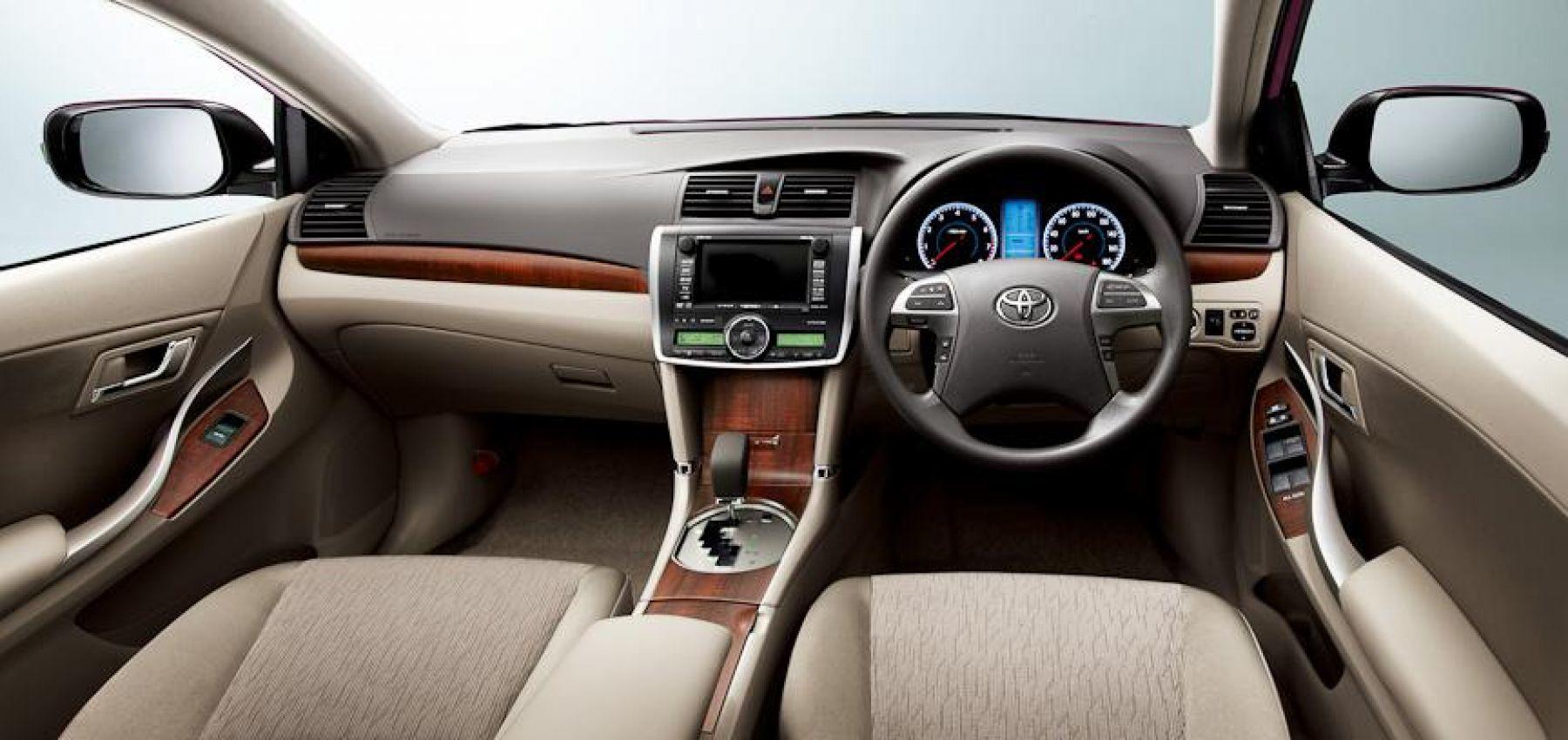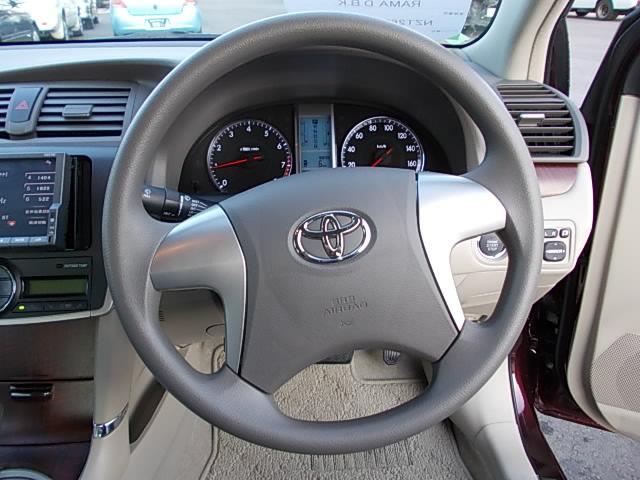Ergonomics outlines how the health of a product can be enhanced to suit human comfort (Bergoffen 2005, p. 25). Since the release of the Toyota Allion by Toyota Japan, the model has stood out as the best-selling compact and sedan car that has gained market worldwide (Toyota Allion/Premio 2000 2013). The car has got a youthful, fashionable and fantastic look. Its sporty look and the appealing headlamps have acted as its marketing advantage.
Allion’s user-friendliness and undisputable driving performance are some of the other merits that the new vehicle has earned from its users. However, it is important to assess the display and design of the dashboard and to present the impacts of the systems on the driver. This new model has been improved from the second generation to accommodate the automation system, gauges, modernized indicators, and automotive navigation systems (Toyota Allion/Premio 2000 2013). The new improvements have been built to embrace the automation of the new model and to provide comfort that was not provided comfort.
The most prominent dashboard systems fitted in the Toyota Allion include the speedometer, steering wheel, odometer, tachometer, the gauges, and indicators (Toyota Allion/Premio 2000 2013). The indicators include gearshift position, the seat belt warning light indicator, engine malfunctioning light, and the parking light indicator that has been fitted in the dashboard (Abut, Hansen, and Kazuya, 2007). Considering all these systems fitted in this new model, there are many effects that the driver will experience when using it.

The speedometer is the gauge that measures and indicates the speed of the car when in motion (Kohli, 1983). The fitted gauge in this new model can allow an error of up to 5 mph whenever the car is driven at 50 mph (Toyota Allion/Premio 2000 2013). This feature protects the safety of the passengers and the driver (Wickens et al, 2004). The tachometer enhances the driver’s knowledge of how the engine’s crankshaft rotates (Parker, 2003). This new model, it enhances the driver’s selection of the gears for safe driving on the roads. The car has also been modified to have ventilated disc front brakes all at the driver’s disposal.
The odometer normally indicates the distance that has been covered with the car (Parker, 2003). The Toyota Allion has been designed to have an electronic odometer. The fuel gauge has also been designed uniquely to fit in the new model’s dashboard. This gauge indicates the fuel capacity in the tank (Parker, 2003). The gauge has got a sensing unit and an indicator. This is important since Toyota Allion consumes 17.2 km/L, and the driver should be aware of the fuel volume whenever he drives the car. This will ensure that the driver does not inconvenience anyone either from/to the airport.
The new model has got a three-spoke steering wheel as shown in the picture below.

This type of steering is manipulated while driving where each input causes a response from the device (Kohli, 1983). The new steering wheel enhances the Toyota Allion’s sporty feel. It has an adjustable column that allows adjustment on the height of the steering wheel providing the driver with ease of entering and exiting.
Other systems fitted in the vehicle include the meter panel fitted to face the driver. There is also a Valvetronic system that varies the lift of valves performing the intake functions leading to the reduction of the pumping loss as well as improving the efficiency of breathing (Ozguner, Acarman & Redmill 2011, p. 18). Others include indicators for; fuel, tire pressure, and fault in the airbag system (Toyota Allion/Premio 2000 2013). The audio system in the dashboard also enhances the entertainment aspect in the car.
All these mentioned systems have been positioned strategically to accommodate all drivers in the car. They are not far from the driver’s reach when driving which is a positive impact in terms of road safety and the car’s efficiency. In this case, 30-50 years-old male with more than 8 years of experience is suited remarkably.
The Relationship between Display and Controls
The systems that have been fitted in the dashboard can be used at various times. According to Ozguner, Acarman and Redmill (2011), the steering wheel and the brakes can be used concurrently. These two devices perform two distinct functions. The steering wheel controls the car while driving. Therefore, the driver manipulates this element to control other sections of the steering system to cause a steer on the wheel (Parker 2003). In the Toyota Allion, the steering wheel is adjustable. Therefore, the driver can easily adjust it whenever he wants to live the car or rather enter in the car. The positioning of this device is accommodative to all drivers irrespective of one’s height.
The front brakes have also been put strategically in front of the driver (Parker 2003, p. 217). The function of the brake system is only to inhibit motion. The location of the braking system is a high achievement in the design of this car. Any slight force applied to the brake system results in equal pressure felt in the whole braking systems (Daniel 2009, p. 32).
The simultaneous operation of the brake and the steering wheel is very possible in the new Toyota Allion model. The position of these two devices allows this application. The driver can operate the two with no complications. The driver does not strain whenever he operates the two devices. The use of these two devices is so effective that the driver does not have to use much force. Consequently, the operation of the two devices is compatible with the user.
The other case to consider is the operation that involves the audio system and the indicator arm. The audio system is fantastic and can be operated easily from the driver’s seat. This is attributed to the fact that the system ensures the driver and the passengers are entertained when traveling in the Toyota Allion (Toyota Allion/Premio 2000 2013). The indicator arm is an important device in the dashboard. The placement of this device is in front of the driver is a great necessity. It allows the driver to indicate the course taken by the driver.
The access and simultaneous operation of these two devices are easy. The position of the two devices in the dashboard allows this (Abut, Hansen and Kazuya, 2007, p. 37-42). The negative impact will only arise when the driver loses concentration due to the entertaining music in the car. From the users’ perspective, the operation of two devices seems to be antagonistic.
The last case we can consider is the operation of the steering wheel and the indicator arm. The functions of these two devices are compatible with the user’s perspective. The driver can operate the two controls concurrently because of how the Toyota Allion’s dashboard is designed (Toyota Allion/Premio 2000 2013). The indicator arm can be operated with one hand as the steering wheel is operated by the other. The relationship between the two devices meets the users’ prospects. The driver finds it very comfortable when operating the two devices together.
From the three cases discussed, it is evident that the association linking the devices meets the users’ expectations. The relationships feel compatible with the users’ perspective. The drivers can easily operate the systems and controls without straining.
Effects of Automation on Driving Workload
Automotive industries have achieved substantial developments in designing automated vehicles (National Automated Highway System Research Program 2001). Automation is aimed at maintaining the car-operator involvement in the system performance that will result in great awareness and reduction of some unsafe practices in the roads eventually. There are various levels of automation. Complete automation of the cars will have both negative and positive impacts on driving workload. The problems that arise due to automation include loss of manual skill (Wickens et al. 2004, p. 132). This problem arises from the car operator vigilance. The operator of the machine will be so much interested in an automated car that he or she will lose the skills of driving manual cars.
Automation has been considered in addressing the need to optimize technologies (National Automated Highway System Research Program 2001). Wickens et al. (2004) argued that the main aim of improved technology is to reduce the human workload. The result of this will be a reduced cost of labor for those who are involved in commercial cars. However, cost reduction is not the solution to the prevention of road accidents. Operating a fully automated car alongside manual cars will not be an easy task due to the difference in speed between the two categories of cars.
Automating the essential systems in the dashboard may also result in improved driving (Ho & Spence 2008, p. 158). It reduces the tasks performed by the driver so the driver pays attention to maintaining the car on the right lane. The automation of devices such as the indicator increases the driver’s capabilities. Automation of the breaks will result in reduced collisions and chances of road accidents.
Automation considered the following three activities.
- Reducing the speed of the car.
- Operating an indicator system.
- Controlling the steering wheel.
With the automation system, the driver will be able to accomplish all these activities with ease (Parker 2003, p. 217). If the systems were not automated, the driver might end up concentrating on one system while neglecting the other systems. With automatic cars, the indicator device works concurrently with the steering wheel (Ho & Spence 2008). The leg will be moved to apply force on the brake while the hand will be operating the other devices. This reduces the overall activities performed by the driver as well as improving his flexibility in the car. The overall result will be a reduced driving workload.
Furthermore, automation will have some effects on drivers with different capabilities (Abut, Hansen & Kazuya 2007, p. 35). The drivers who can drive for a long period will not be affected adversely as compared to the drivers who can only drive for a short period. There will be reduced fatigue on drivers who can drive over long distances for a long period. The drivers who lose concentration easily will be comfortable while using the automated systems in the car. Therefore, automation of the cars has different impacts on the driving workload depending on the driver’s capabilities, and activities that he can perform in the car (National automated highway system research program: a review 2001, p. 14).
Conclusion
Designing and introducing Toyota Allion in the world’s market was a great achievement of the Toyota Company (Toyota Allion/Premio 2000 2013). In this light, the company will continue to benefit from this achievement.
References
Abut, H, Hansen, J, & Kazuya, T 2007, Advances for In-vehicle and Mobile Systems: Challenges for International Standards, New York, Springer.
Bergoffen, G 2005, Commercial Bus and Truck Safety, Commercial Motor Vehicle Driver Safety Belt Usage, Transportation Research Board, Washington, D.C.
Daniel, S 2009, Muscle Car Interior Restoration Guide. Pearson Education, Upper Saddle River, NJ.
Ho, C, & Spence, C 2008, The Multisensory Driver, Ashgate, Aldershot.
National Automated Highway System Research Program: A Review 2001, National Research Council, Washington, DC.
Ozguner, U, Acarman, T, & Redmill, K 2011, Autonomous Ground Vehicles. Web.
Parker, B 2003, The Isaac Newton School of Driving: Physics and your Car, Johns Hopkins University Press, Baltimore.
Toyota Allion/Premio 2000. 2013, JPNZ, Auckland, N.Z.
Wickens, C, Lee, J, Liu, Y, & Becker, G 2004, An Introduction to Human Factors Engineering, 2nd and, Pearson Education, Upper Saddle River, NJ.
Kohli, P.L. Automotive Electrical Equipment. New Delhi: Tata McGraw-Hill, 1983. Print.